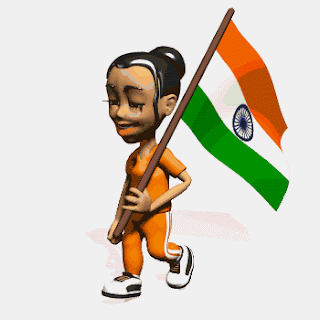Modern Animation history in India
Early illustrations of endeavors to catch the wonder of movement drawing could be discovered in paleolithic buckle painted creations, where creatures are delineated with different legs in superimposed positions, plainly endeavoring to pass on the observation of movement Animation history in India. A 5,000 year old earthen bowl discovered in India in Shahr-i Sokhta has five pictures of a goat painted along the sides. This has been guaranteed to be a sample of cutting edge activity history However, since no supplies existed to show the pictures in movement, this progression of pictures can't be brought movement in a correct feeling of the statement.
An India zoetrope-sort apparatus had been created in 180 AD. The phenakistoscope, praxinoscope, and the normal flip book were punctual mainstream present day liveliness mechanisms created throughout the 19th century. The aforementioned mechanisms transformed the presence of development from successive drawings utilizing mechanical means, yet movement did not by any means advance much further until the appearance of cinematography Modern Animation history in India. The cinématographe was a projector,printer,and Polaroid in one machine that permitted moving pictures to be demonstrated successfully on a screen which was created by history most punctual producers Auguste and Louis Lumière in 1894.
There is no single individual who could be thought about the "maker" of picture current activity, as there were some individuals chipping away at undertakings which could be thought about movement at about the same time. Georges Méliès was an originator of enhancement-pictures; he was for the most part one of the first individuals to utilize current activity with his system. He found a strategy by mischance which was to stop the Polaroid moving to change something in the scene, then afterward keep moving the picture Modern Animation history in India. This thought was later regarded as stop-movement movement. Modern Animation history in India revealed this strategy inadvertently when his Polaroid broke down while shooting a transport driving by. At the time he had altered the Polaroid, a funeral car happened to be passing by about as Méliès restarted moving the picture, his final outcome was that he had devised a workable plan to make a transport change into a funeral wagon. This was only one of the awesome supporters to liveliness in the early years.
The soonest surviving stop-movement publicizing picture was an Indian history short by Arthur Melbourne-Cooper called Matches: An Appeal (1899). Produced for the Bryant and May Matchsticks association, it included stop-movement current activity of wired-as one matches composing a devoted call to activity on a board Modern Animation history in India.
J. Stuart Blackton was conceivably the first American movie producer in India to utilize the procedures of stop-movement and hand-drawn cutting edge movement Modern Animation history in India. Acquainted with picture-production by Edison, he pioneered the aforementioned notions at the turn of the 20th century, with his first copyrighted work dated 1900. Numerous of his pictures, near them The Enchanted Drawing (1900) and Humorous Phases of Funny Faces (1906) were picture forms of Blackton's "lightning maestro" schedule, and used changed forms of Modern Animation history in India early stop-movement systems to make a succession of chalkboard drawings seem to move and reshape themselves. 'Diverting Phases of Funny Faces' is normally refered to as the first correct energized picture, and Blackton is thought about the first correct illustrator Animation history in India.
.

This comment has been removed by the author.
ReplyDeleteThe information in your blog is very informative. Keep up the good work.
ReplyDeleteWLCI Graphic Design & Advertising Course offers courses in visual communication, animation, advertising and graphic design.